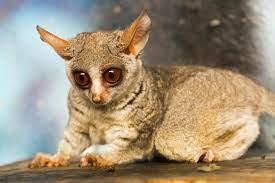Galagos, often called "bush babies," are captivating creatures that dwell in the African forests and savannas. These small primates may be pint-sized, but they pack a punch when it comes to survival and acrobatics.
Galagos are a family of small primates native to the African continent. Their petite size and remarkable acrobatic abilities make them an interesting subject of study. But what makes these tiny creatures so unique? Let's explore some fascinating facts about galagos.
1. Nocturnal Marvels
One of the most intriguing aspects of galagos is their nocturnal lifestyle. These creatures are adapted to a life in the dark, with large eyes that provide excellent night vision. Their nocturnal behavior helps them avoid daytime predators and also serves as an advantage in finding food during the night.
2. Acrobats of the Forest
Galagos are renowned for their acrobatic prowess. They can leap incredible distances, thanks to their powerful leg muscles and a specialized bone in their ankles called a "tarsal." This unique bone works like a spring, storing energy and releasing it in a burst of power, allowing them to make astonishing jumps from tree to tree.
3. Remarkable Communication
Galagos have a sophisticated vocal repertoire, including a wide range of calls and songs. These vocalizations serve various purposes, from marking territory to locating mates. Researchers are still uncovering the intricacies of their communication, which adds to the mystique of these creatures.
4. A Varied Diet
These small primates are opportunistic feeders. Their diet includes a wide array of food, such as insects, fruits, tree gums, and even small vertebrates. Their varied diet reflects their adaptability and resourcefulness in the wild.
5. Unique Parenting
Galagos have an interesting approach to parenting. Mothers are the primary caregivers and carry their infants on their belly, transferring them to safe locations while they forage for food. The infants are known for their adorable appearance, with enormous eyes and tiny bodies.
6. Species Diversity
The galago family is diverse, with more than 20 known species. Each species has unique characteristics, from their vocalizations to their habitat preferences. Their ability to adapt to various environments across Africa has led to this rich diversity.
7. Ecological Importance
These small creatures play a vital role in their ecosystems. They help control insect populations, aid in pollination when they feed on nectar from flowers, and are prey for various predators. Their presence has a ripple effect on the entire ecosystem.
8. Threats and Conservation
Galagos face threats typical of many wildlife species, including habitat loss and fragmentation due to deforestation and agricultural expansion. Conservation efforts are essential to safeguard their populations and the biodiversity of the regions they inhabit.
Galagos are nature's tiny acrobats, showcasing an array of remarkable traits and behaviors. Their nocturnal lifestyle, acrobatic abilities, and unique parenting strategies make them fascinating subjects for both scientists and nature enthusiasts. However, these small primates face challenges in the form of habitat loss and human activities, underscoring the importance of conservation efforts to protect these captivating creatures and the ecosystems they inhabit.
